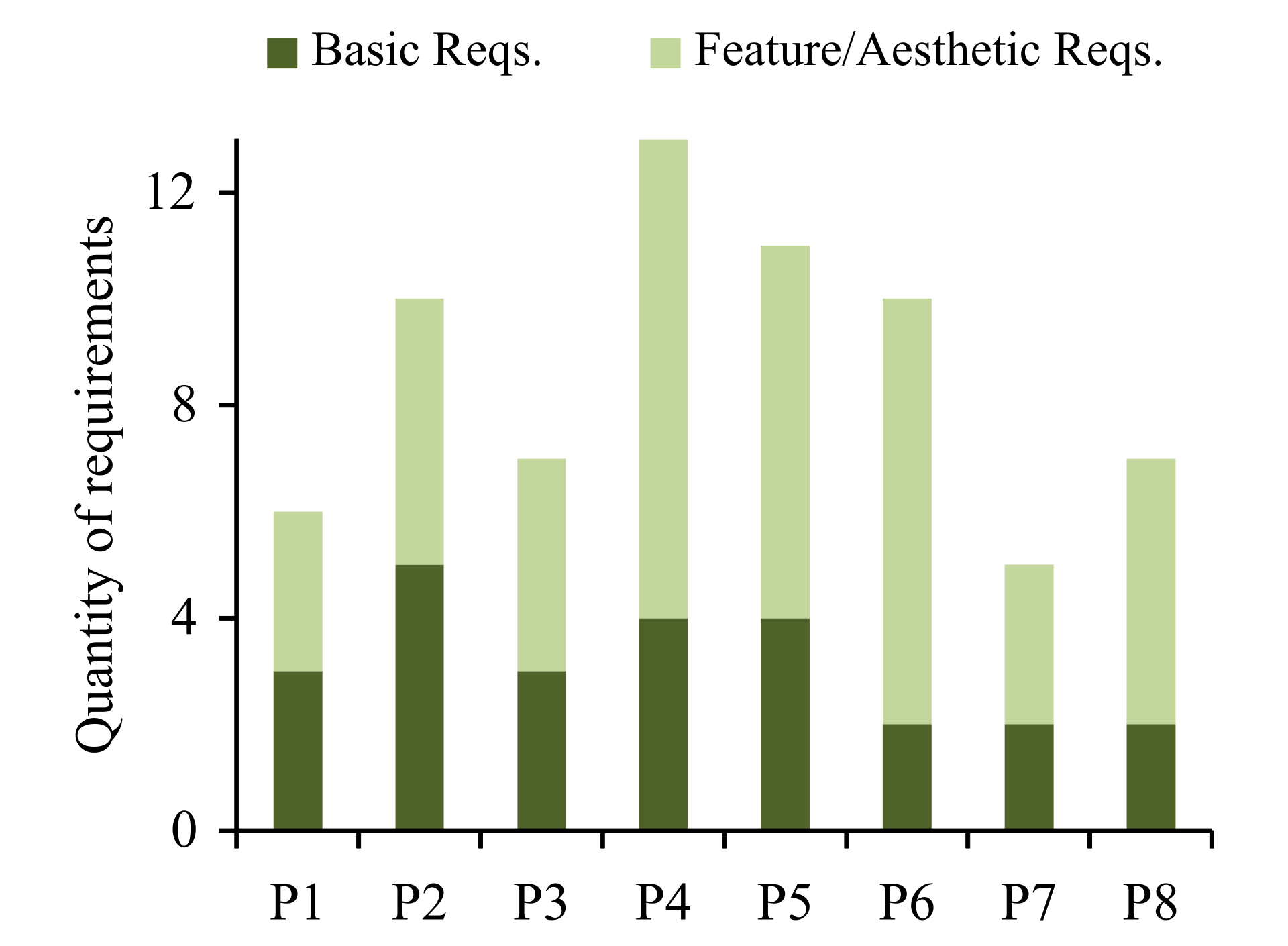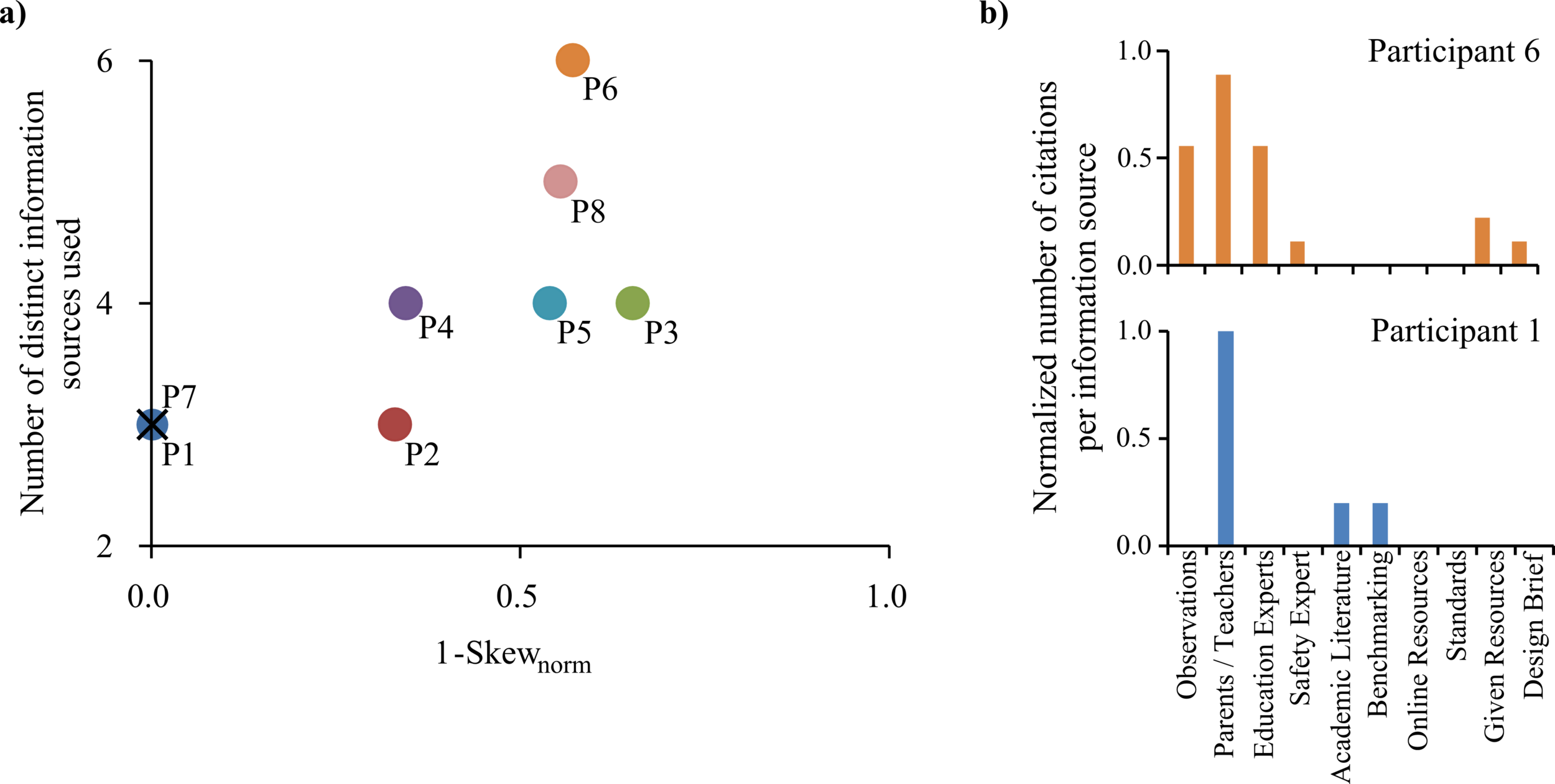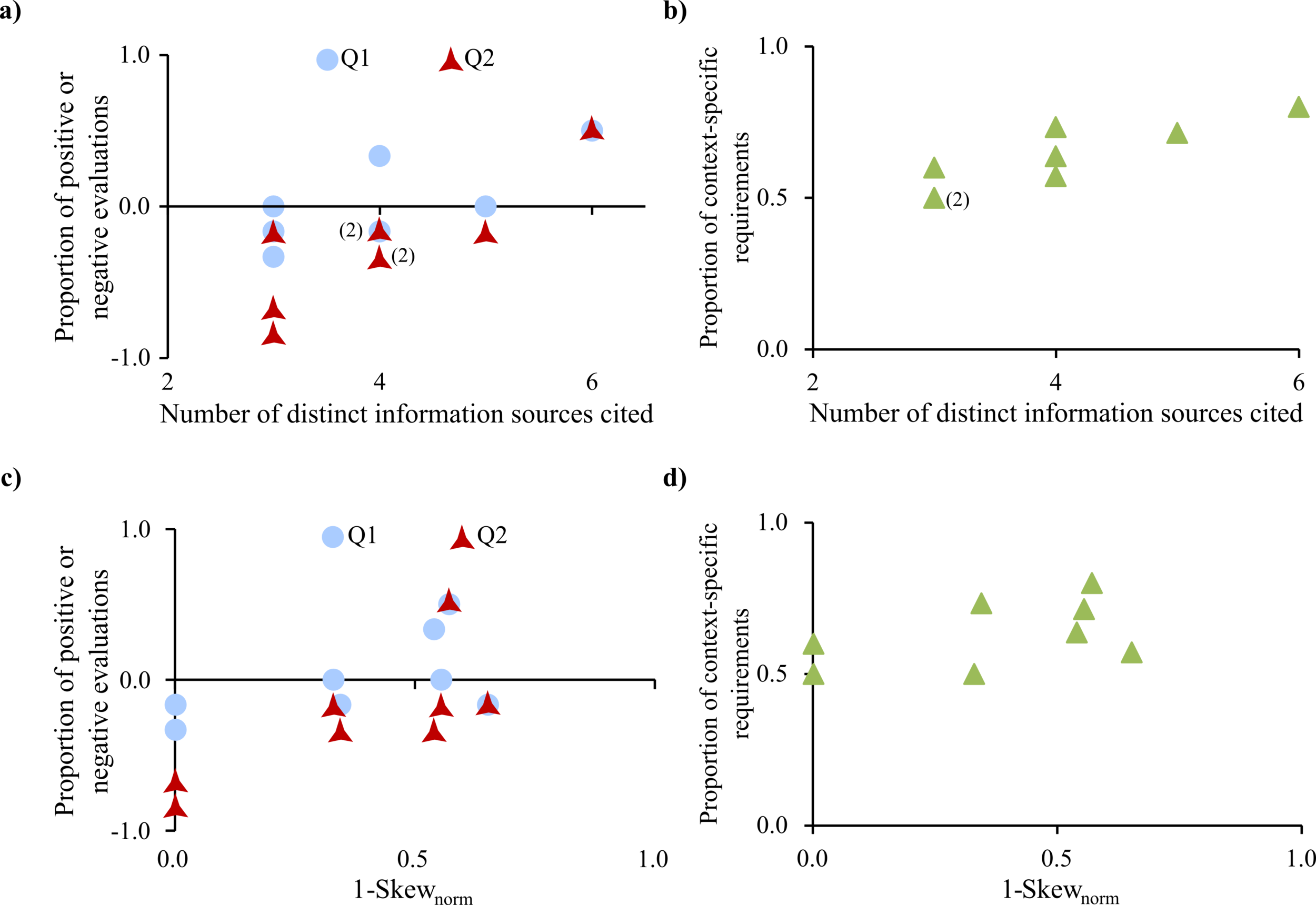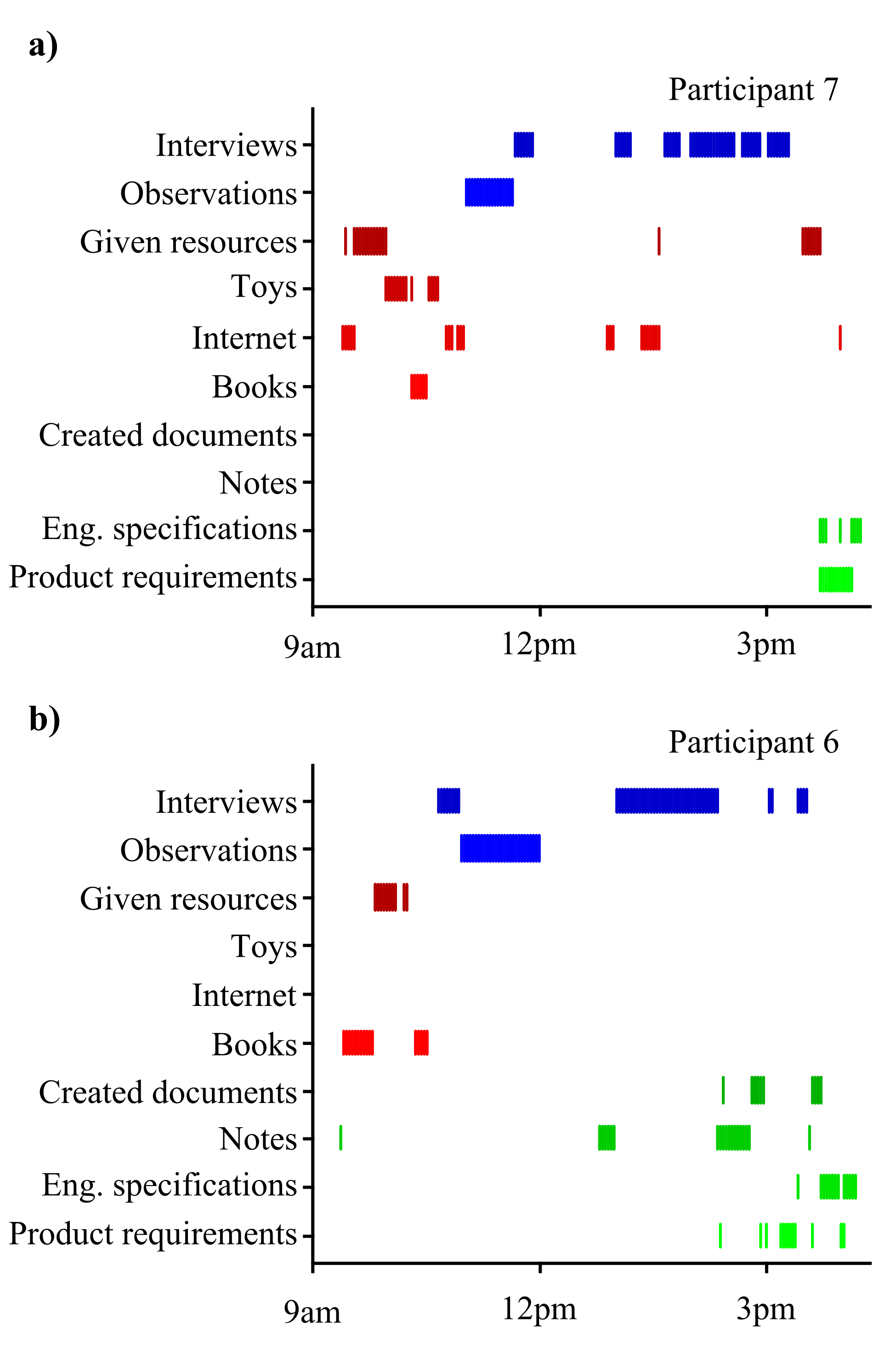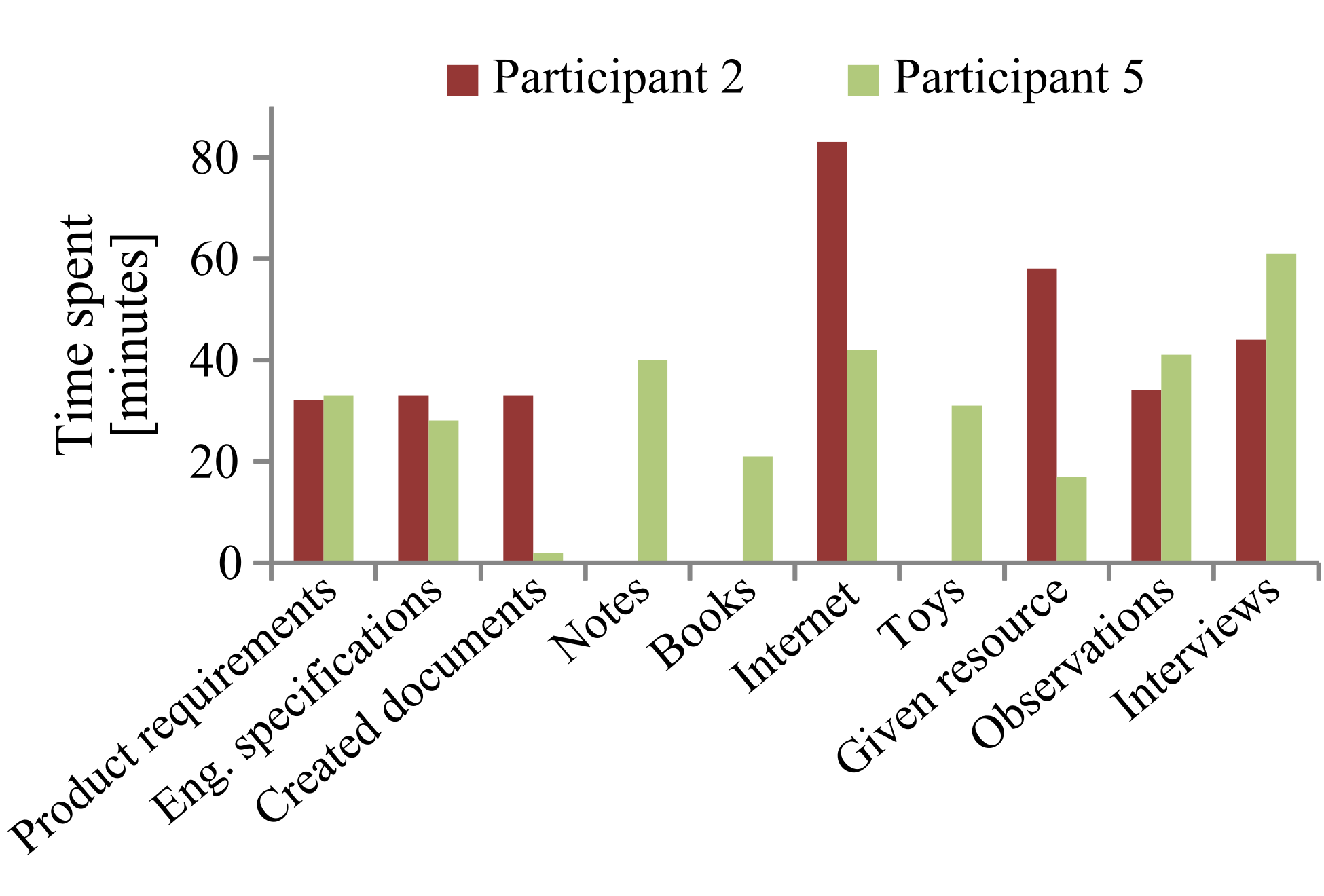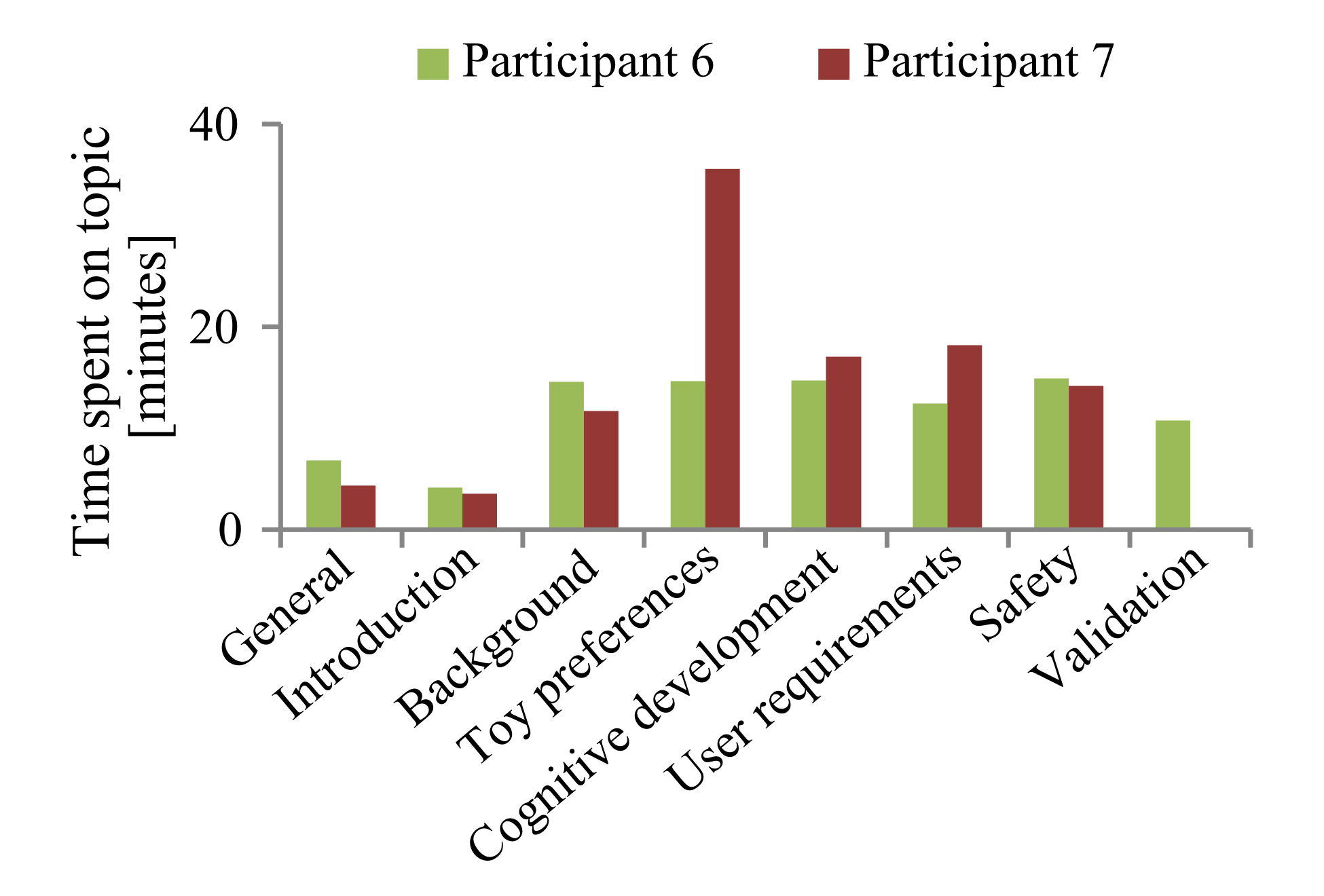Requirements development: approaches and behaviors of novice designers
study purpose
The goal of this study was to investigate novice designers’ information gathering behaviors and understand how these behaviors relate to the development of product requirements. The study was guided by two research questions: 1) How do novice designers use information sources to develop product requirements; and 2) What differences exist in information gathering behaviors between participants who develop requirements that receive high and low scores from stakeholders?
methods
Eight students in their fourth year of engineering volunteered as participants. Students participated in an eight hour design task where-in they were tasked with developing product requirements and specifications for a ‘toy to help in the cognitive development of young children.’ Participants were given access to the internet, library books, guidelines, standards, reference toys, opportunity to observe children playing with various toys, & opportunity to interview various stakeholders. All interviews were recorded and all requirements and specifications were collected.
findings
The figures below show the findings from this study. This findings show that the stakeholder validity of participants’ requirements and the level of tailoring of the requirements to the design context and stakeholders were highly correlated to the number of distinct information sources used and moderately correlated to participants’ dependency on particular information sources. Furthermore, an in-depth exploration of participants’ information gathering behavior during the design task elucidated specific strategies and processes that may explain why some participants were more successful than others.

